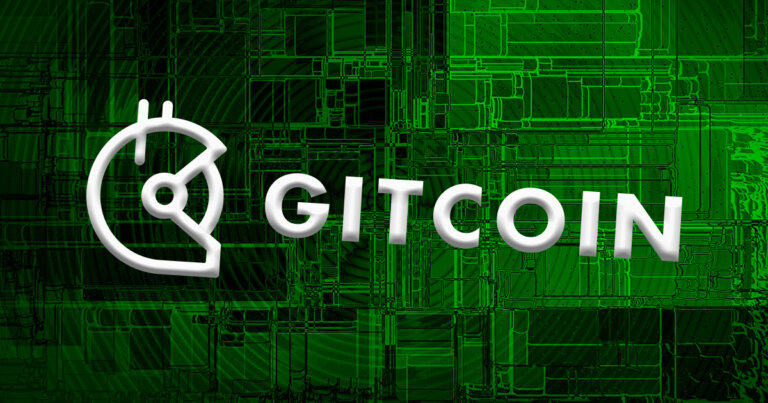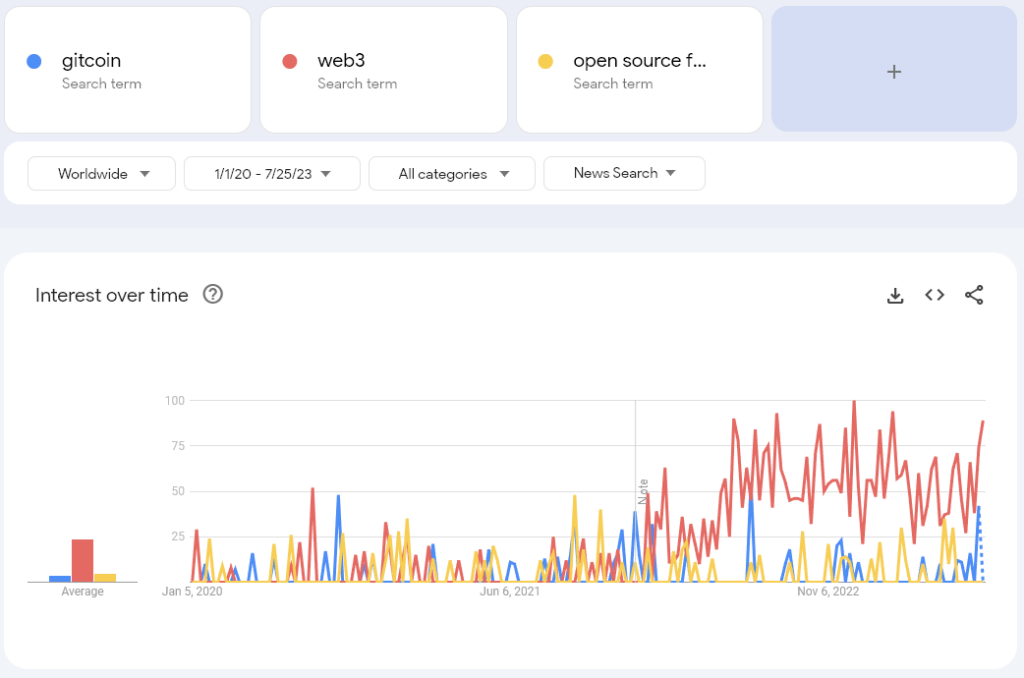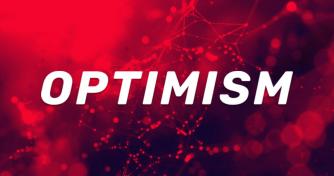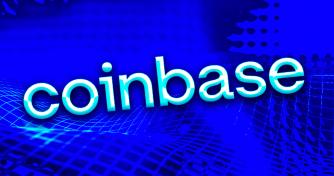 Op-ed: Let’s talk about Gitcoin – the silence around open source funding is deafening
Op-ed: Let’s talk about Gitcoin – the silence around open source funding is deafening Op-ed: Let’s talk about Gitcoin – the silence around open source funding is deafening
To build a decentralized internet, we cannot rely on centralized funding alone.

Cover art/illustration via CryptoSlate. Image includes combined content which may include AI-generated content.
Since 2020, crypto has seen dramatic prices, adoption, and attention swings. However, one term integral to the success of web3 has seemingly stagnated – ‘open-source funding.’
Google News articles related to open-source funding have remained flat, along with searches for the biggest player in the space, Gitcoin.
For comparison, the term ‘web3’ has hovered around its average interest level of 50% since 2021, while the open-source funding terms rarely break 25% once per month.

Yet, the lack of coverage does not reflect the dynamic, evolving reality of the sector.
A closer look reveals a flourishing ecosystem where organizations like Gitcoin and the Public Goods Network (PGN) are redefining the possibilities of open-source funding, with significant implications for public goods.
We need a change.
As a journalist deeply engrossed in Bitcoin, crypto, and blockchain technology, I was made aware that there is very little coverage of open-source funding initiatives, and I think that’s a problem.
With Central Bank Digital Currencies (CBDCs) potentially on the horizon, there’s an undeniable need to safeguard the decentralized and open ethos of Web3 that we, as a community, strive towards.
Uniquely open-sourced funding initiatives, like Quadratic Funding (QF) used by Gitcoin, can play a pivotal role in this mission by providing resources that empower the community and retain the democratic principles that underpin the blockchain ecosystem.
Henceforth, my focus will be to bring more visibility to these initiatives, underlining their importance in maintaining the very fabric of the decentralized and open Web3 amid the changing landscape.
Open source quadratic funding.
According to information shared with CryptoSlate, Gitcoin has been making strides in fostering an ecosystem of public goods, seemingly under the radar. The organization has distributed over $50 million across over 100 Quadratic Funding rounds, supporting institutions like UNICEF with blockchain-based public goods funding.
Among its many initiatives, Gitcoin focuses on regenerative initiatives, issuing grants for nature-based solutions, clean energy, and indigenous communities. One shining example is the Universal Impact Pool, which guarantees donations are funneled to projects that matter.
Quadratic Funding is a distinctive crowdfunding approach inviting community members to ‘vote’ with their contributions on project funding allocation. The method pools together small donations, matching them with a more significant amount from a central fund.
A defining feature of QF is its emphasis on the number of contributors rather than the total donation amount, fostering community involvement and shared ownership.
According to WTFisQF.com, a funding round where several projects receive funds from a varying number of contributors has the final distribution calculated using the QF formula and then projects with broader support receive a more significant match.
Despite potential challenges such as collusion or misuse of funds, QF presents a novel way of empowering the community and could play a significant role in shaping the future of cryptocurrency projects like those on Gitcoin.
Public Goods Network
A prime example of the potential innovation possible through quadratic funding, the Public Goods Network (PGN), a new collaborative project backed by core’ Gitcoiners,’ is shifting the paradigm of public goods funding.
The PGN functions as a low-cost Layer 2 (L2) OP Chain, directing the majority of net sequencer fees towards public goods. Gas fees from PGN transactions are pooled to support public goods initiatives. Further, ETH is the native token of the network removing it from the issues of tokenomics, instead simply acting as a route to generate community funds through transacting on chain.
Its mission is supported by an alliance of public goods advocates, including Gitcoin, and is powered by the infrastructure platform Conduit.
Kyle Weiss, the Executive Director at the Gitcoin Foundation, expressed the organization’s excitement to incubate PGN and its ambition to become a digital focal point for those interested in building and funding public goods. Nicole d’Avis, Protocol Lead at PGN, described the network as ” a natural evolution in exploring how we generate funding in the digital realm for public goods.”
The PGN provides users and developers with a cost-effective alternative to the Ethereum mainnet as a Layer2 OP Chain, while running dApps on PGN automatically generates funding for public goods. The aim being to create a legitimate, durable, and always-on funding source that allows public goods organizations to grow their resources.
Thus, while ‘open source funding’ may not pique news organizations’ interest, the sector is thriving.
Entities involved should be lauded for fostering an environment where public goods can be funded sustainably and reliably. Their efforts pave the way for a future where open-source funding is critical in supporting the greater good.



























































